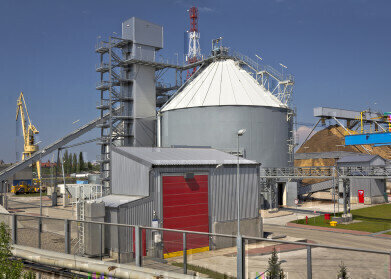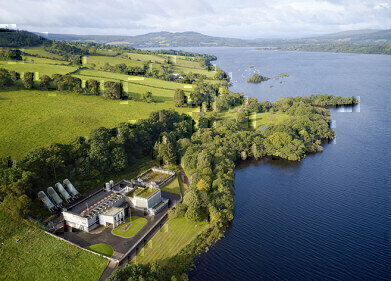Consultancy Services
Ceramic Wear Protection Solutions for Burning Biomass in Power Generation
Oct 13 2012
Operators of coal fired power stations are now beginning to move towards biomass resources as a way of extending the life of their stations and to help meet new targets for CO2 emissions. Currently biomass co-firing is the most cost-effective option using biomass with efficiencies reaching 45%. Co-firing offers the added advantage – besides carbon free combustion – that the coal power plants require a low investment and the electricity is generated at a competitive cost depending on biomass feedstock availability.
Biomass can come from a number of sources including agricultural residues; animal manure; wood wastes from forestry and industry; residues from food and paper industries; municipal green wastes; sewage sludge; dedicated energy crops such as short-rotation (3-15 years) coppice (eucalyptus, poplar, willow), grasses, sugar crops (sugar cane, beet, sorghum), starch crops (corn, wheat) and oil crops.
This wide availability makes biomass seem an ideal resource with carbon free emissions. However there are some drawbacks such as biomass being both corrosive and highly abrasive meaning the cost for plant protection and maintenance remains high.
Sand and grit can also be a major issue especially in wastewater thanks to their high silica content. Their abrasive nature creates various problems such as wear and erosion of the equipment.
In addition to the wear on conveying equipment caused by contamination in biomass, the nature of the biomass material itself often causes problems. First, many types of biomass are fibrous: a factor that results in high amounts of wear when they are conveyed at high speeds. Second, fibrous biomass has to be conveyed at a velocity fast enough for it to flow; but not so fast as to produce dust, which can then cause Health and Safety issues by creating a hazardous environment.
Kingfisher Industrial (UK) are wear protection specialists and aim to resolve these issues by providing solutions to the handling of biomass in power stations. They have provided wear protection aimed specifically for coal fired power stations for decades and were one of the first to address the particular problems of biomass when the resource moved into the mainstream of power generation.
Kingfisher has adopted an application specific solution to the handling of biomass, using its K-ZAS ceramic lining solution in pneumatic conveying pipework, and the K-CAST monolithic ceramic lining system for countering the different amounts of wear that occur in triffucators, non return valves (NRV’s) and within the burners, where abrasion is at its greatest.
The K-ZAS ceramic lining solution provided by Kingfisher is designed for the protection of plant and equipment encountering severe abrasion and erosion attack from bulk solids being conveyed, stored or processed by mechanical, pneumatic or hydraulic means. Rated nine on the MOHS hardness scale and having excellent thermal shock resistance, K-ZAS is ideally suited to counter excessive abrasion and high temperatures for applications within the power generation, bulk solids handling and mineral processing industries.
The K-CAST ceramic lining system offers the key advantage of constant performance at elevated temperatures – up to as high as 1200oC. It also provides a highly flexible solution to abrasion induced problems, offering excellent resistance to both impact and sliding induced abrasion.
Events
Apr 22 2024 Hannover, Germany
Apr 23 2024 Kuala Lumpur, Malaysia
Apr 24 2024 Sao Paulo, Brasil
May 05 2024 Seville, Spain
May 13 2024 Munich, Germany














